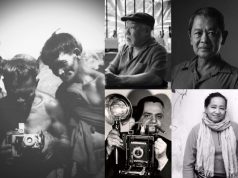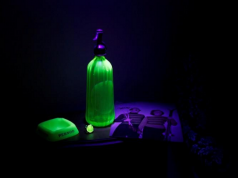While the issue on sculptor Ferdinand Cacnio’s UPlift has died down, the UP College of Fine Arts’ Department of Theory believes that discourse should continue and said in a statement that a forum on public art in UP is in the works for September 2017.
“This case should not be dismissed as a mere trending topic on social and mass media. The uproar and spirited discussions have raised important questions surrounding the work: including the complex nature of originality and appropriation within the art world, the politics behind representations of gender and the female form, and the appropriateness of public art in relation to their sites of installation,” the department said in a statement.
“The department recognizes that these issues need to be thoroughly threshed out. The question of the work’s influence and originality, for instance, is a complex one that can not just be resolved by juxtaposing surface similarities without further critical discourse. Discussions must take into account and weigh theories and perspectives complicating the issue of originality and appropriation in art,” the statement continued.
A brass sculpture donated by Cacnio’s batch for UP, UPlift shows similarities with the public art installation of Dutch artist Elisabet Stienstra’s The Virgins of Apeldoorn in the Netherlands. The said work was completed in 2001.
In line with the discourse, the department also underscored that it is high time to revisit policies regarding the donation, acquisition, selection, siting and maintenance of public art inside the university campus.
“We educators and artists should be vocal over the process of presenting and staging of public art which, for better or for worse, helps shape public discourse, awareness, values and aesthetics. Concrete steps must be undertaken as all UP units have accessible spaces filled with artworks that can reach people far beyond their borders,” the department said through the statement.
“Past lessons have taught us to exercise due diligence, excellence, and independence in such matters. Before being allowed to permanently grace the university’s grounds, works of public art and donated art works should undergo a proper and thorough process of acquisition and/or commissioning and documentation that is consistent with a larger plan for utilizing the university’s spaces, resources, and cultural labor. Clearer and more cohesive institutional policies and processes coursed through a body or cultural office in charge of screening and processing such initiatives, are needed,” it continued.
The statement further indicated the importance of having an approved master plan for public art, and that it should include guidelines for curatorial directions, environmental design and location, and relevance for the academic community.
“The limited space of the Academic Oval and its environs in UP Diliman, in particular, must be carefully planned and reserved for but the most important of works that best signify the ideals of the university,” it indicated.
In support of the efforts of UP and art community to engage in critical discourse, the public can look forward to more discussions and fora regarding the issue in the coming months.









